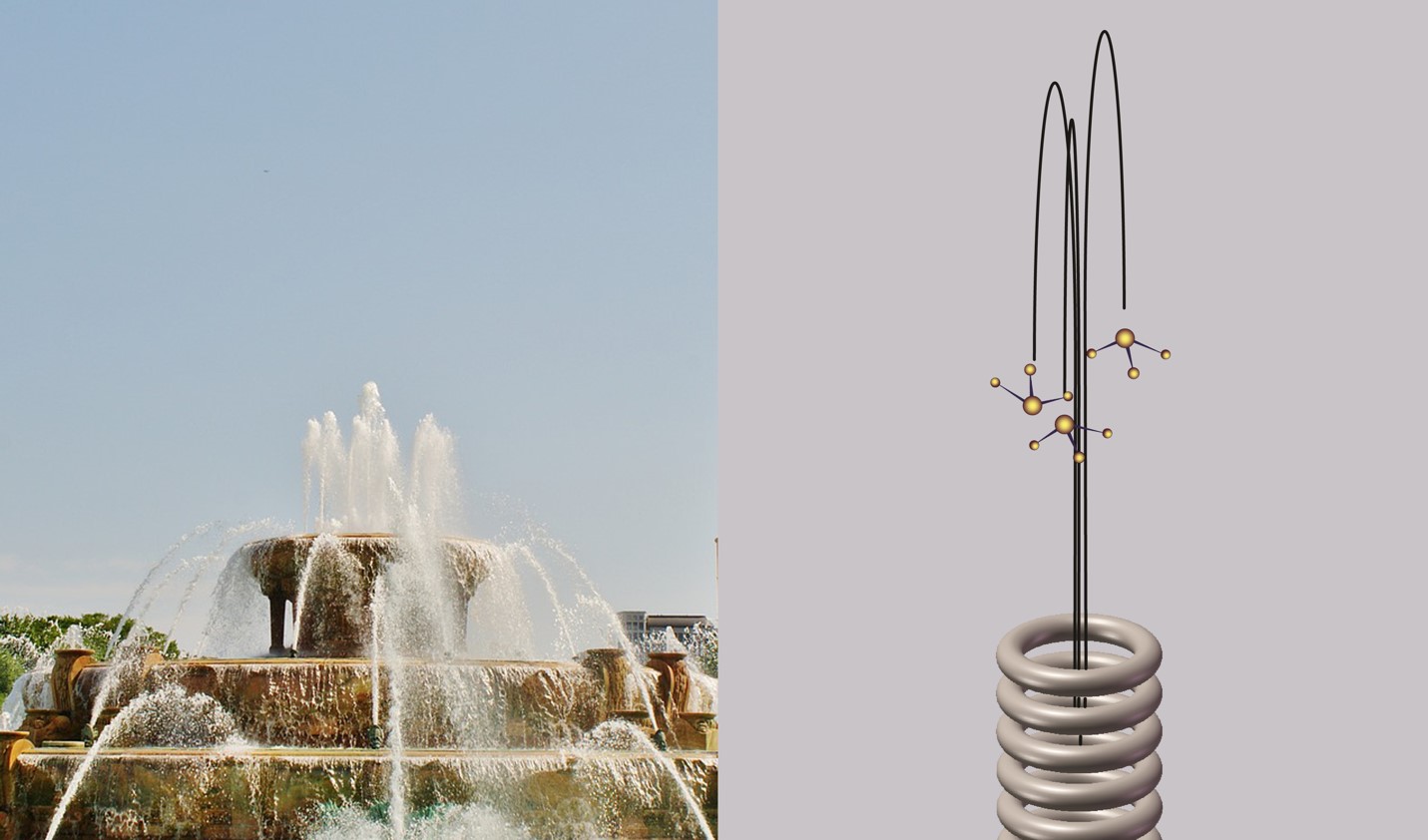BRIEF: The World's Tiniest Fountains Can Now Toss Molecules

Left image: Buckingham Fountain in Chicago (Public Domain), Right image: An artist's depiction of the molecular fountain (Courtesy of the authors from VU University in Amsterdam, The Netherlands.)
(Inside Science) -- A group of scientists from the Netherlands has constructed the first "molecular fountain" -- a device that launches individual molecules upwards using an electric field, then lets them fall back down due to gravity.
Atomic fountains -- which toss atoms rather than molecules -- are already used for extremely accurate time keeping and high precision measurements to test various quantum and relativistic theories.
The scientists here employed a similar technique, but used molecules instead of atoms as projectiles. According to their paper, molecular fountains are more difficult to control because molecules can rotate and vibrate in more ways. To overcome this obstacle, they used an advanced electromagnetic technique to cool the molecules down to within 0.001 degree Celsius above absolute zero, in effect making them so cold they barely moved. The chilled molecules are then launched upwards gently and spend up to one-fourth of a second in free fall.
This newly invented technique can expand the boundaries for future scientific experiments, ranging from the study of individual molecular properties, to investigations of fundamental physical constants that can influence our current understanding of gravity.
Their paper will be published in the journal Physical Review Letters.

